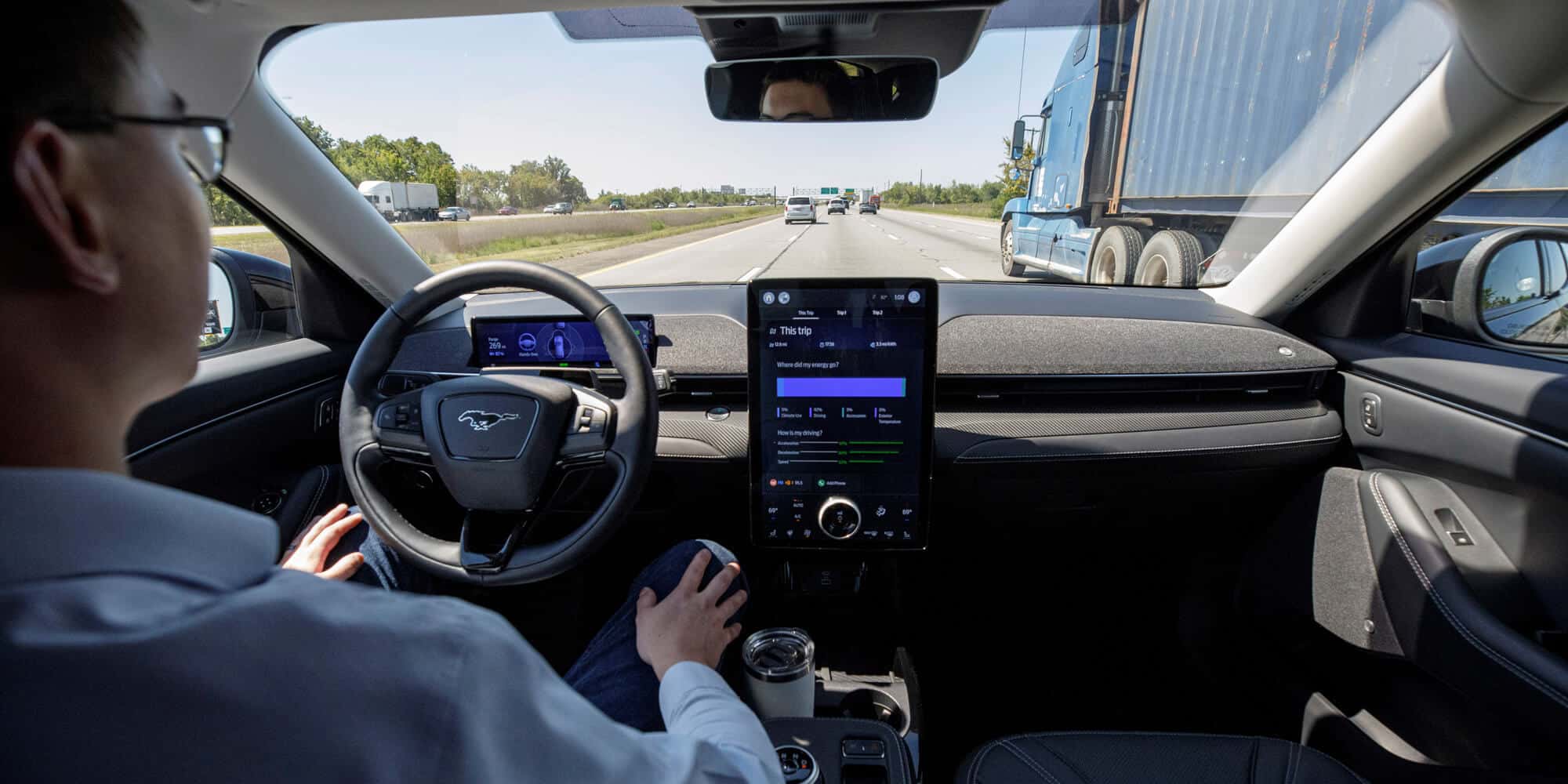

BLUECRUISE ADDS HANDS-FREE LANE CHANGING, TECH TO MAKE ROAD-SHARING EASY WITH BIGGER VEHICLES ON KEY 2023 MODELS
>> Three new features coming to next-gen Ford BlueCruise 1.2 – starting this fall with the 2023 Mustang Mach-E – as well as Lincoln ActiveGlide 1.2 – including hands-free lane changing for easier passing, in-lane repositioning to more confidently share roadways with larger vehicles and predictive speed assist to smoothly reduce speed entering tight curves
>> Ford has built an in-house team dedicated to constantly improving BlueCruise – adding features and enhancing its Advanced Driver Assist Systems (ADAS) with experiences that offer a more human-like driving feel
>> More than 75,000 Ford and Lincoln owners have enrolled in BlueCruise and ActiveGlide, with more than 16 million hands-free driving miles accumulated through the end of August
DEARBORN, MICH. – Ford Motor Company continues making hands-free driving even better by launching BlueCruise 1.2 and Lincoln ActiveGlide 1.2 with new features – including hands-free lane changing – and system updates to create more of a human-like driving feel.
The available new system starts arriving on vehicles from the factory this fall – beginning with the Ford Mustang Mach-E.
"We are investing in our ADAS team to constantly improve BlueCruise and ActiveGlide for our customers," said Doug Field, Chief EV & Digital Systems Officer, Ford Model e. "The latest improvements allow customers to command lane changes using just a turn signal, and make hands-free driving feel more human-like by smoothly slowing down for turns, and giving more room to large vehicles in neighboring lanes. These improvements are just the beginning of a constant journey toward improving safety and, in the future, giving customers valuable time back."
Available BlueCruise 1.2 and ActiveGlide 1.2 include three new features:
> Lane Change Assist can help drivers move through traffic on the freeway with more confidence while using BlueCruise. The system will perform a hands-free lane change when requested by the driver tapping the turn signal, and it can even suggest if a lane change would be beneficial when following slow-moving traffic.
> Predictive Speed Assist automatically and smoothly adjusts the speed as drivers approach a sharp curve and will help signal the driver ahead of time when a speed change is about to occur, so they understand why the vehicle is slowing.
> In-Lane Repositioning makes the hands-free highway driving experience feel more natural, keeping the vehicle in its lane while subtly shifting the vehicle’s position away from vehicles in adjacent lanes – especially helpful when next to bigger vehicles such as semis.
Ford engineers also are dedicated to improving its ADAS to deliver more human-like driving performance, in addition to refining visuals, sensing and steering experiences. They’ve also been continually improving maps with over-the-air updates identifying prequalified sections of divided highways where BlueCruise can be used – currently spanning more than 130,000 miles.
Once a pre-qualified road is identified, BlueCruise-equipped vehicles sense and help confirm lane lines are visible, the driver has his or her eyes on the road and other conditions appropriate before transitioning to hands-free driving. BlueCruise uses animated cluster transitions featuring text and blue lighting cues to communicate that the feature is in hands-free mode, effective even for those with color blindness.
Collectively, 75,000 Ford and Lincoln owners enrolled in BlueCruise and ActiveGlide, with more than 16 million hands-free driving miles accumulated through the end of August.













